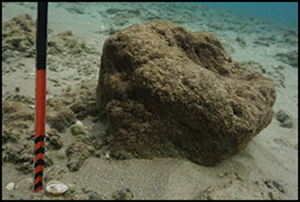Refine listing
Actions for selected content:
1416829 results in Open Access
PET Imaging in Dementia: Mini-Review and Canadian Perspective for Clinical Use
-
- Journal:
- Canadian Journal of Neurological Sciences / Volume 52 / Issue 1 / January 2025
- Published online by Cambridge University Press:
- 04 March 2024, pp. 26-38
-
- Article
-
- You have access
- Open access
- HTML
- Export citation
Within Without: Dreaming New Futures of and for Psychoanalysis
-
- Journal:
- Cambridge Journal of Postcolonial Literary Inquiry / Volume 11 / Issue 1 / January 2024
- Published online by Cambridge University Press:
- 04 March 2024, pp. 74-77
-
- Article
-
- You have access
- Open access
- HTML
- Export citation
Implicational Kleene algebra with domain and the substructural logic of partial correctness
-
- Journal:
- Mathematical Structures in Computer Science / Volume 34 / Issue 7 / August 2024
- Published online by Cambridge University Press:
- 04 March 2024, pp. 645-660
-
- Article
- Export citation
The duplication diacritic: A case study of variation and change in Mayan writing
-
- Journal:
- Ancient Mesoamerica / Volume 35 / Issue 2 / Summer 2024
- Published online by Cambridge University Press:
- 04 March 2024, pp. 562-587
- Print publication:
- Summer 2024
-
- Article
- Export citation
Matthew Ichihashi Potts, Forgiveness: An Alternative Account (New Haven, CT: Yale University Press, 2022), pp. xi + 268. $30.00
-
- Journal:
- Scottish Journal of Theology / Volume 77 / Issue 3 / August 2024
- Published online by Cambridge University Press:
- 04 March 2024, pp. 291-292
- Print publication:
- August 2024
-
- Article
- Export citation
Canid attacks on sea turtles along the Northeastern Brazilian Coast
-
- Journal:
- Journal of the Marine Biological Association of the United Kingdom / Volume 104 / 2024
- Published online by Cambridge University Press:
- 04 March 2024, e18
-
- Article
- Export citation
Shaping a Dutch East Indies: François Valentyn's VOC empire By Siegfried Huigen. Boston and Leiden, The Netherlands: Brill, 2023. xvi+362 pages. Hardback, USD $166.00. ISBN: 9789004524989. Ebook, USD $166.00. ISBN: 9789004545816.
-
- Journal:
- International Journal of Asian Studies / Volume 21 / Issue 2 / July 2024
- Published online by Cambridge University Press:
- 04 March 2024, pp. 381-385
-
- Article
- Export citation
INS volume 30 issue 3 Cover and Front matter
-
- Journal:
- Journal of the International Neuropsychological Society / Volume 30 / Issue 3 / March 2024
- Published online by Cambridge University Press:
- 04 March 2024, pp. f1-f4
-
- Article
-
- You have access
- Export citation
Computer-aided design tool for typical flexible mechanisms synthesis by means of evolutionary algorithms
-
- Article
-
- You have access
- Open access
- HTML
- Export citation
Continuity and climate change: the Neolithic coastal settlement of Habonim North, Israel
-
- Article
-
- You have access
- Open access
- HTML
- Export citation
CLASSICS AND CELTIC STUDIES - (G.) Baker Classics and Celtic Literary Modernism. Yeats, Joyce, MacDiarmid and Jones. Pp. xxiv + 299. Cambridge: Cambridge University Press, 2022. Cased, £75, US$99.99. ISBN: 978-1-108-84486-4.
-
- Journal:
- The Classical Review / Volume 74 / Issue 2 / October 2024
- Published online by Cambridge University Press:
- 04 March 2024, pp. 642-643
- Print publication:
- October 2024
-
- Article
- Export citation
Lithic tool provisioning in the western Aztec provinces: A view from Calixtlahuaca
-
- Journal:
- Ancient Mesoamerica / Volume 35 / Issue 2 / Summer 2024
- Published online by Cambridge University Press:
- 04 March 2024, pp. 494-524
- Print publication:
- Summer 2024
-
- Article
- Export citation
Endless History: Hegel's Flawed Account of Amerindians
-
- Journal:
- Hegel Bulletin / Volume 45 / Issue 2 / August 2024
- Published online by Cambridge University Press:
- 04 March 2024, pp. 292-312
- Print publication:
- August 2024
-
- Article
- Export citation
Optimising subgrid-scale closures for spectral energy transfer in turbulent flows
-
- Journal:
- Journal of Fluid Mechanics / Volume 982 / 10 March 2024
- Published online by Cambridge University Press:
- 04 March 2024, A18
-
- Article
-
- You have access
- Open access
- HTML
- Export citation
Rare inheritance studies on yellow sarson for petalous and apetalous traits
-
- Journal:
- Plant Genetic Resources / Volume 22 / Issue 2 / April 2024
- Published online by Cambridge University Press:
- 04 March 2024, pp. 125-130
-
- Article
- Export citation
Travel insurance: an adult CHD patient’s perspective
-
- Journal:
- Cardiology in the Young / Volume 34 / Issue 5 / May 2024
- Published online by Cambridge University Press:
- 04 March 2024, pp. 1134-1135
-
- Article
- Export citation
PLATO AND WRITING - (M.) Esposito The Realm of Mimesis in Plato. Orality, Writing, and the Ontology of the Image. (Brill's Plato Studies Series 13.) Pp. xii + 173. Leiden and Boston: Brill, 2023. Cased, €119. ISBN: 978-90-04-53311-0.
-
- Journal:
- The Classical Review / Volume 74 / Issue 2 / October 2024
- Published online by Cambridge University Press:
- 04 March 2024, pp. 411-413
- Print publication:
- October 2024
-
- Article
- Export citation
Gender and work: emerging issues
-
- Journal:
- The Economic and Labour Relations Review / Volume 35 / Issue 1 / March 2024
- Published online by Cambridge University Press:
- 04 March 2024, pp. 211-213
-
- Article
-
- You have access
- HTML
- Export citation
Perfect sampling of stochastic matching models with reneging
- Part of
-
- Journal:
- Advances in Applied Probability / Volume 56 / Issue 4 / December 2024
- Published online by Cambridge University Press:
- 04 March 2024, pp. 1307-1339
- Print publication:
- December 2024
-
- Article
- Export citation






